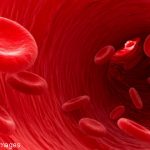However, LabCorp runs the test for a minimal reimbursement rate.10 The problem with this route is that the level of reimbursement is not commensurate with the test’s clinical value, including recouping research and development (R&D) costs. Running the test for a low profit margin (but high volume) benefits LabCorp. However, it disincentivizes biotech companies and investigators to invest time, energy, and money into further research.
The commercial lab duopoly also seems to play an outsized role in determining if a lab test is clinically useful based on whether or not they run a specific test. Measuring hydroxychloroquine whole blood drug levels in my (Don Thomas, MD) lupus patients has transformed my lupus clinic by increasing adherence, decreasing clinic-wide disease activity, and potentially reducing the risk for retinopathy.11,12 For several years, most insurance plans did not cover this test when performed by Exagen Diagnostics. However, after the large commercial lab duopoly (LabCorp and Quest) began offering the test, insurance covered it widely. How could a lab be determined by the insurance companies as having clinical utility only after being offered at a relatively cheap cost by the duopoly, but not when performed by Exagen?
Lost Patents
Cell-bound complement activation products (CB-CAPS) were described initially by Susan Manzi, MD et al. in 2004 and became commercially available as a proprietary lab in 2012 (Exagen).13
We routinely order C3 and C4 in SLE patients. Low levels can increase the pre-test probability for an SLE diagnosis and help follow disease activity and therapeutic responses. However, due to competing processes (e.g., increased hepatic production) during SLE inflammation, they are helpful in only one of five patients.7
During active SLE, complement consumption cleaves C4d from its parental complement. C4d binds to blood cells (i.e., cellular bound-complement activation products [CB-CAPS]) for their lifespans. CB-CAPS levels are unaffected by processes such as hepatic C4 production and are more reliable in identifying complement consumption than C4 levels. Erythrocyte cell-bound C4d (EC4d) is highly associated with SLE disease activity and can identify SLE patients with active disease who have chronically low or normal C3 and C4 levels.7
B cell-bound C4d (BC4d) has high SLE specificity (similar to Smith and dsDNA autoantibodies). However, BC4d has 53% sensitivity while anti-Smith and anti-dsDNA have sensitivities of only 14% and 33%. When BC4d and EC4d are used in the Lupus AVISE Test, the result significantly increases or decreases the pre-test probability for diagnosing SLE with superior sensitivity and specificity over the ancient biomarkers.

